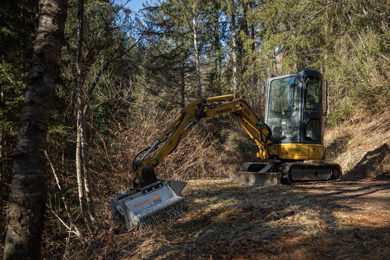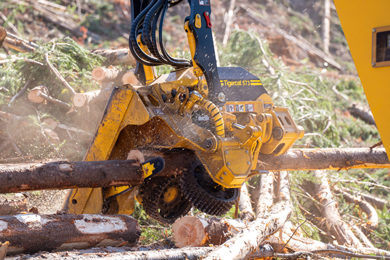The UK Forest Market Report 2018, launched in London November 21, has revealed a continuing great performance from forestry investment.
Many UK forest owners who purchased their property 30 or 40 years ago are now reaping exceptional rewards for patiently growing their timber assets.
Not only is their investment showing returns of 13.9% per annum – one of the best performing asset classes – but the price of standing timber has soared 30% in the last year alone.
The 20th edition of The UK Forest Market Report, produced by Tilhill Forestry and John Clegg & Co describes the commercial forestry market as “brisk and robust” in the year to September 2018, with £104.2m of forest properties traded.
This is a 6% drop from 2017 but the market comprised a smaller number of higher value sales (57 in 2018 compared to 87 in 2017) with an average size of 196ha (149ha in 2017) and an average price of £1.83m (£1.28m in 2017). Scotland retained its dominant position in the marketplace with 69% of the sales recorded.
The report points out that standing timber prices have rocketed by around 30% over the last 12 months – great news for owners whose forests are now ready to harvest. Additionally, despite political uncertainty, the report suggests that new agricultural policies may be on the horizon that will encourage a more integrated approach to land use particularly with forestry and farming.
“Overall we believe that the market continues to behave robustly in the light of the wider economic environment, demonstrating the strength and resilience of forestry as a long-term investment,” says the report.
“New investors are coming through to investigate the marketplace with many of these based within the EU and reassuringly confident to invest in the UK.”
Fenning Welstead, director of John Clegg & Co, said demand from investors seeking ownership of forestry assets has never been stronger in his experience.
“The upward movement in the price of timber in the last 12 months has been staggering,” he said. “It has been driven partly by the weak pound and more expensive imports but also, I believe, by the dawning realisation that the supply of fibre is finite.”
More conifers were planted in Scotland last year than in any year since 2000 and encouragingly, the report says, Forestry Commission Scotland has reported strong demand for woodland creation schemes for 2018/19 and 2019/20 with over 12,000ha being assessed – well exceeding their target of 10,000ha per year.
The forestry grant budget in Scotland has been increased for 2018/19 to accommodate the increased demand – a clear sign of how the Scottish Government perceives the importance of forestry as part of the rural economy.







